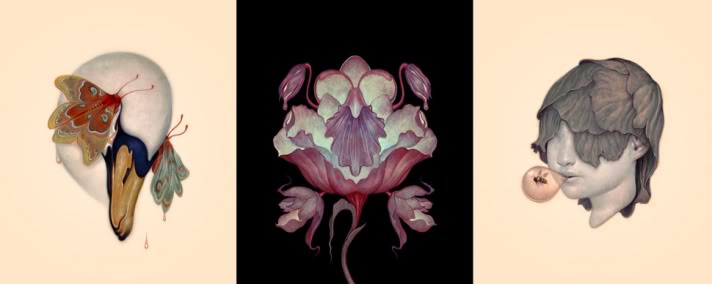b
Beauty in the Slaughter: The Art of James Jean
James Jean is a Los Angeles-based artist and illustrator. His brand of colorful, macabre, and wacky surrealism contains elements from mythology, Asian art, and anatomical illustrations; childhood, sexuality, and transformation are common themes. His style is fluid and graceful, often using soft colors that make the nightmares and scenes of grisly slaughter strangely friendly.
